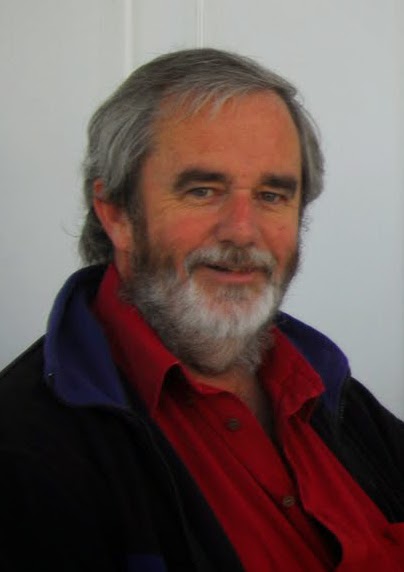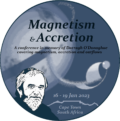In MemoriaM
Darragh o’Donoghue

Darragh O’Donoghue, who tragically passed away at age 58 in 2015, was an esteemed colleague and friend to many astronomers world-wide and had established a formidable reputation for his intellect, insights and abilities. His sharp wit, sense of humour and kindly nature endeared him to so many people he met.
He joined the SAAO in 1997, after more than a decade as a researcher at the University of Cape Town, working closely with Brian Warner and other colleagues. Scientifically he made seminal contributions to studies of white dwarfs, cataclysmic variables, hot stars and pulsating variables. He was a leader of the Edinburgh-Cape Blue Object Survey and as such was one of the co-discoverers of an entirely new class of pulsating subdwarf B stars. These he went on to investigate and characterise in detail, with over 30 papers co-authored on the subject between 1995 and 2015. The referee’s report for the group’s latest EC Survey paper was, in fact, received the day after he died.
High speed photometry has been a critical tool for investigating a range of variable stars, pioneered by Brian Warner’s UCT group. Darragh designed one of the first high-speed photometers ever used and many years later he ensured that this type of work would be one of the unique capabilities of the Southern African Large Telescope (SALT). As a result, both of the telescope’s first-light instruments – SALTICAM and the Robert Stobie Spectrograph (RSS) – possess high-speed capability.
His contributions to SALT have been immense, starting with a complete redesign of the secondary optics used on the Hobby-Eberly Telescope (HET), SALT’s older twin, which yielded sharper images and a larger field of view for SALT. Darragh also designed SALT’s first-light acquisition/imaging camera; SALTICAM. As the head of the SAAO Instrumentation group at the time, he then oversaw the instrument’s construction in the SAAO workshops.
Following the death of SAAO Director Bob Stobie death in 2002, Darragh took over as one of the two South African representatives on the SALT Board and rapidly gained the respect and deference of the other Board members. He was determined that SALT would be the very best telescope it could possibly be and worked tirelessly at all levels to that end. When it became clear that SALT was not functioning properly, Darragh took up the challenge and meticulously tested all aspects of the system and later established that the issue lay with the mechanical design of a crucial opto-mechnical interface. He then led the campaign that included the repair, re-alignment and comprehensive optical testing of the SAC, and afterwards delighted in the telescope finally producing the sharp images that his design allowed.
Whatever Darragh chose to do, he did it with 100% of his effort; there were never any half measures. This applied to science, technology and all of his many other pursuits. This was vividly demonstrated when he took on the task of defending a former director of SAAO, Phil Charles, against unwarranted charges brought by his employer, the National Research Foundation. He applied his characteristic dedication to understanding labour law and the King III report on Corporate Governance. This he did to great effect and ultimately achieved an excellent outcome, not just for that specific case, where all charges were dismissed – but for the sake of academic freedom in South Africa.
Following the successful conclusion of the SALT repair work, and his extraordinary foray into the legal world, Darragh received the Gill Medal from the Astronomical Society of South Africa for exceptional services to South African astronomy in 2011. During the sabbatical year granted by the SALT Board in appreciation for his efforts to realize SALT’s full imaging potential, Darragh spent time working on designing and patenting a compact, revolutionary type of spectrograph based on the critical enabling technology of curved volume phase holographic gratings.
Darragh’s research over his career included seminal works on compact binaries, including cataclysmic variables and X-ray binaries, topics of this meeting. He was a both a proficient observer, instrument builder and coder of data reduction and analysis software, while at the same time having a strong theoretical understanding and an ability to develop models to explain observations. It is very fitting that the 2023 Magnetism & Accretion conference be held in his memory.
